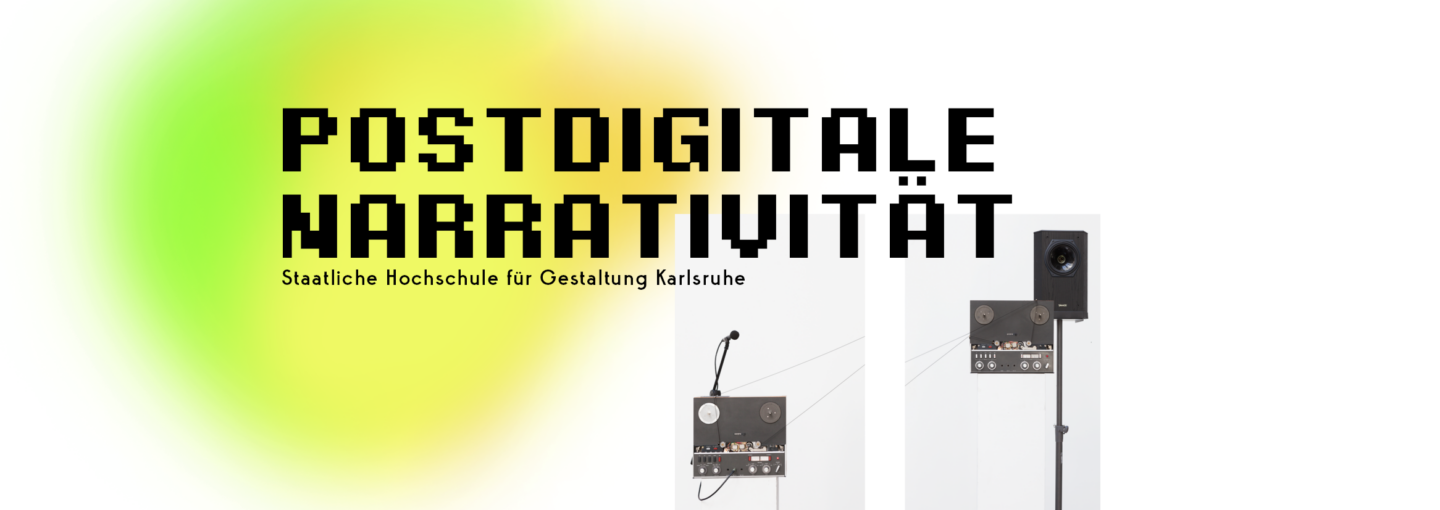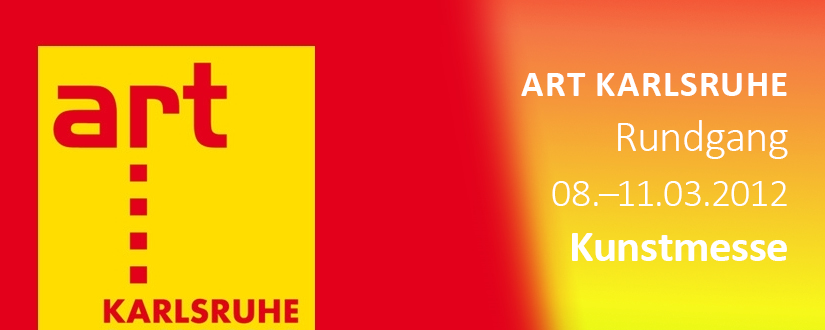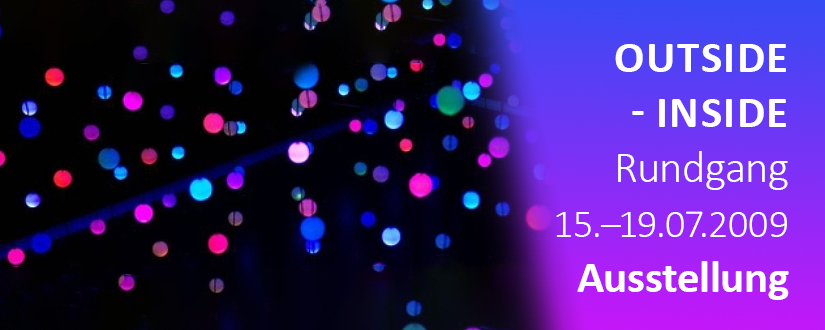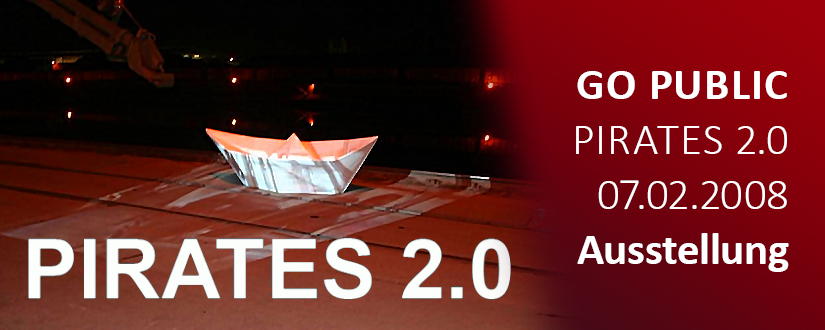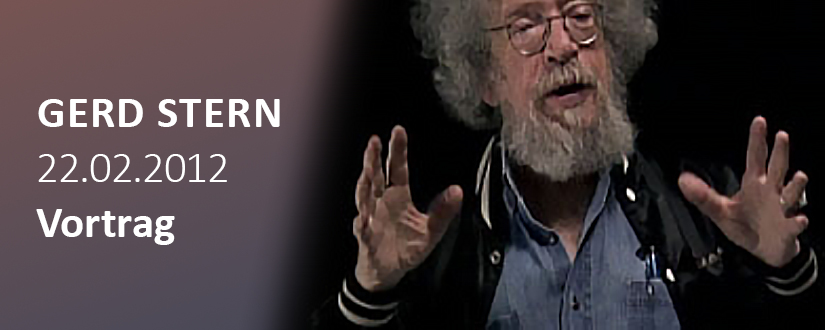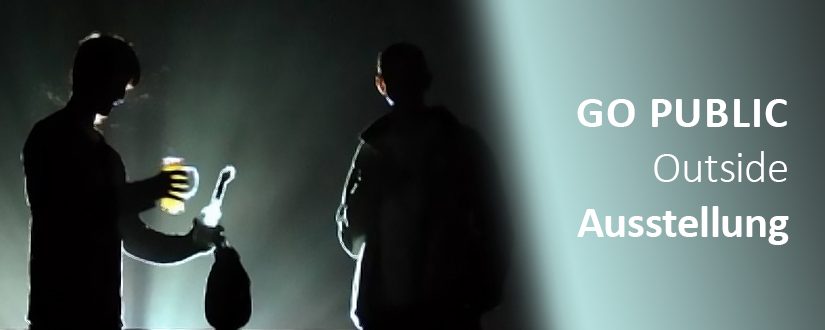art-KARLSRUHE – Nàrkissos & Schnäppchenjäger
_ _ _ _ _ _ _ _ _
English version
Contact
GameLab / Institute for Postdigital Narratives
Staatliche Hochschule für Gestaltung Karlsruhe
Lorenzstr. 15
76135 Karlsruhe
E-Mail: arafinski(ät)hfg-karlsruhe.de
Facebook: http://www.facebook.com/group.php?gid=141680085845299
Mission Statement

Label for Game Art and Pervasive Games
GAMELAB MISSION STATEMENT
by Adam Rafinski
The GameLab of the Institute for Post-Digital Narrativity at the Karlsruhe University of Arts and Design is a label for media art that approaches to the medium of gaming and contemporary game culture analytically. It is a reaction to two acute new developments:
(1) The digital game, as an independent medium that, in turn, the possibilties of the media arts make accessible to a diverse audience, is steadily gaining in importance as a narrative and artistic format of expression. Research on the expressive boundaries and possibilities of digital gaming systems is therefore the focus of interest. Innovative, critical and subversive strategies for dealing with this algorythmical mass medium are devised at the Institute for Post-Digital Narrativity and published via the GameLab.
(2) Through the contact with digital media, more and more areas of our daily lives are being infiltrated a consciousness of gaming. Under the heading “the extended definition of gaming”, GameLab has set itself the task of reaping artistic yields from the material of contemporary gaming, as well as from its implications for structuring real world models. With this, GameLab is not only pioneering in the media arts, but also highlights the importance of a consciousness of gaming in the context of our technology-satured society.
GameLab’s profile is distinguished by artistic production and research in game art, retro games, serious games, indie games, machinima, augmented reality, global positioning systems, social networks, stereoscopy, alternate reality games, pervasive games, playful boundary pushers and the extended definition of gaming. The label organizes exhibitions, publications, and public events such as screenings, performances, lectures and workshops, thus reaching a large audience with diverse insights into current developments and research issues surrounding the extended gaming definition of the digital media arts.
The GameLab was brought into being in 2010 by Professor Michael Bielicky, Adam Rafinski and Jens M. Stober.
InfoArt 2009 – Outside – Inside
Der zweite Teil des Ausstellungsprojektes “outside- inside” fand im Rahmen der “Sommerloch” – Ausstellung ’09 an der HfG Karlsruhe statt.
Vom 15.-19. Juli wurden zahlreiche Arbeiten aus dem Fachbereich MK/digitale Medien/infoart gezeigt. Die Möglichkeiten der Präsentation digitaler, insbesonders ephemerer, zeitbasierter Medienkunst im Innenraum sollte dabei eingehend untersucht werden. Die Bandbreite der gezeigten Arbeiten reichte von interaktiven Medienarbeiten, die sich teils spielerisch mit ernsthaften Themen, wie der täglichen Datenflut oder der Flüchtlingsproblematik auseinandersetzten (Jens Stober), über konzeptuelle Arbeiten, die das Freizeitverhalten der Massen untersuchten (Achim Weinpel: “heute findet keine Party statt”), bis zu medial gestützter Performance-Kunst (Christian Claus “shooting pixels”). Auch der “visual cube”, eine dynamische Lichtskulptur aus 1000 farbigen LEDs, die in einer dreidimensionalen Kubusmatrix angeordnet sind, war eine besondere Attraktion (www.visualcube.org/1e3).
Es nahmen teil: Magdalena Abele, Benjamin Bartosch, Achim Weinpel, Thomas Kühn, Jens Stober, Benjamin Matzek, Michael Rentschler, Andreas Rentschler, Ilda Kim, Christian Claus, Marianne Schmidt, Yvette Pistor, Kristoph Lai, Oskar Klinkhammer, Jan Cordes
Organisation & Pressearbeit: Prof. Michael Bielicky, Marianne Schmidt, Johannes Kersting
Fotos: Johannes Kersting
_ _ _ _ _ _ _ _ _
English version
The second part of the exhibition project “outside-inside” took place during the “Sommerloch” exhibition ’09 at the University of Arts and Design Karlsruhe.
From 15th till 19th July many works from the Department of Media Arts/Digital Media/InfoArt were shown. The possibilities of presenting digital, especially ephemeral, time-based media art in the interior was to be examined in detail. The range of works on display ranged from interactive media works, which partly dealt playfully with serious topics, like the daily flood of data or the refugee problem (Jens Stober), on conceptual work, which examined the leisure habits of the masses (Achim Weinpel: “Today there is no party”), to media based performance art (Christian Claus “shooting pixels”). The “visual cube”, a dynamic light sculpture made out of 1000 colored LEDs that are arranged in a three dimensional cube matrix, was a special attraction (www.visualcube.org/1e3).
Participants were: Magdalena Abele, Benjamin Bartosch, Achim Weinpel, Thomas Kühn, Jens Stober, Benjamin Matzek, Michael Rentschler, Andreas Rentschler, Ilda Kim, Christian Claus, Marianne Schmidt, Yvette Pistor, Kristoph Lai, Oskar Klinkhammer, Jan Cordes
Organisation & Public Relations: Prof. Michael Bielicky, Marianne Schmidt, Johannes Kersting
Fotos: Johannes Kersting
Pirates 2.0
Nächstes Projekt ist das nächtliche Happening “Pirates 2.0” am 7. Februar 2008. Dieses findet ab Einbruch der Dunkelheit auf dem Gelände des Rheinhafens in Karlsruhe statt. Präsentiert werden beeindruckende Installationen und Performances verschiedenster künstlerischer Bereiche.
Das Areal stellt interessante Herausforderungen an das Ausstellungskonzept. Stille Gleise, Architektur verschiedener Stilrichtungen, steppenartige Natur und Schrottberge kennzeichnen die Umgebung des Hafenbeckens. Das abwechslungsreiche Ambiente bietet viel Raum für grenzenlose Experimentierfreude.
GoPublic schafft tiefgreifendes Erleben, durch sehr individuelle Einzelprojekte innerhalb einer Gruppenausstellung. Diese spiegelt die persönliche Vielfalt und Multikultur der Beteiligten und regt das Interesse aller Besucher an.
Die Stille des Sonnenuntergangs am Hafenbecken wird schlagartig gebrochen. Ratternde Generatoren ertönen entlang der ganzen Werftstraße. Auf den Lagerhallen flackern Lichtprojektionen auf.
Weitab der Hauptanziehungspunkte Karlsruhes liegt der Aktionsort von “PIRATES 2.0”.
Es ist Go Publics dritte Ausstellung, unter Einsatz aller, inzwischen umfangreich erweiterten, Gerätschaften. Bisher wurde Kunst direkt zum Publikum gebracht. Diesmal ist es anders. Das Ambiente des Hafens lässt sich nicht in die Stadtmitte transportieren. Der Ansturm ist groß, um Kunst zwischen Lagerhallen, Docks, der Raffinerie und Schrottbergen, zu erleben.
Erste Besucher sind zwei Streifenpolizisten, welche den Veranstaltungshinweis von Anwohnern bekommen haben. Beeindruckt vom Guerilla-Konzept, kommen diese sogar ein zweites Mal.
Die Gruppe unter sich ist ebenso neugierig wie das Publikum. Nicht wenige der Ausstellungsprojekte sind erst Stunden zuvor konzipiert worden. Die Arbeiten sind bemerkenswert unterschiedlich und spiegeln die Multikultur von GoPublic wieder. Die Steinzeit der Videospieleära wird in die Gegenwart berufen. Eine Schlange steht an, um Supermario auf der Wand einer verlassenen Fabrikhalle zu spielen. Wenige Meter daneben entsteht ein dreidimensionales Bild aus geplatzten und luftgefüllten Ballons. Furchterregende Schreie ertönen vom Ende der Straße. Mit einem Mikrophon gewappnet, begeben sich Mutige in einen scheinbar endlosen dunklen Tunnel, an dessen Ende ein Licht scheint. Im Gang erstreckt sich der eigene Schatten vom Anfang bis zum Ende und spielt mit dem hoffnungsvollen Licht in der Ferne. Umkehren ist jederzeit möglich und mit einem Mikrofon wird mit der Außenwelt kommuniziert. Die Lautstärke ist auf Maximum aufgedreht. Auf dem Boden liegen Schaufeln und Besen, deren Stiele hochspringen. Jemand spielt Posaune, andere rappen, schreien, tanzen. Wieder andere trauen sich erst gar nicht hinein. Es ist eine Faszination, die Gänsehaut einjagt. Zum Abschluss wird ein großes Papierboot ins Wasser gelassen. Unter Jubeln und Klatschen versinkt es langsam unter der stillen Wasseroberfläche.
_ _ _ _ _ _ _ _ _
English version
The next project is the night happening “Pirates 2.0” on February 7th 2008. It will start at dusk on the premises of the Rhein harbor in Karlsruhe. Impressive installations and performances from a variety of artistic fields will be presented.
The site presents interesting challenges to the exhibition concept. Silent tracks, different architectural styles, natural steppe and mountain of scrap characterize the environment of the basin. The varied ambience allows for much room for boundless experimentation. GoPublic provides profound experience through individual projects within a group exhibition. It reflects the personal diversity and multiculturalism of the participants and encourages the interest of all visitors.
The silence of the sunset at the harbor is broken abruptly. Rattling generators sound along the entire Werftstreet. On warehouses flickering light projections appear. Off-site from the main attractions of Karlsruhe lies the place of action of “PIRATES 2.0”.
It is Go Public’s third exhibition, using all, now greatly expanded, equipment. Previously art was brought directly to the audience. This time it’s different. The ambience of the harbor can not be transported into the city center. There is a big run on experiencing art between warehouses, docks, the refinery and the waste mountains.
The first visitors are two patrol officers who have received an event announcement from local residents. Impressed by the guerrilla concept, the two even return for a second visit.
The group itself is just as curious as the audience. Quite a number of exhibition projects have been conceived only hours ago. The works are remarkably different and reflect the multiculturalism of GoPublic. The stone age of the video game era is appointed to the present. A queue is lining up to play Super Mario on the wall of an abandoned factory building. A few meters away, a three dimensional image is created by exploded and air-filled balloons. Terrifying screams sound from down the street. Equipped with a microphone, brave ones repair to seemingly endless dark tunnel, where a light appears at the end. In the corridor their own shadow extends from the beginning to the end and plays with the hopeful light in the distance. Turning back is possible at any time and communication with the outside world is possible through the microphone. The volume is turned up to the maximum. On the ground there are shovels and brooms, their stems jump up. Someone plays trombone, others rap, scream, dance. Still others do not dare entering. There is a fascination that scares goosebumps. At the end a large paper boat is lowered into the water. Under cheering and clapping it slowly sinks below the still water surface.
Frontiers Final Edition – ZKM / Welt der Spiele
Präsentation: FRONTIERS Final Edition
Datum: 29. Februar 2012 – 16 Uhr
Ort: ZKM Medienmuseum / Welt der Spiele, Lorenzstraße 19, Karlsruhe
FRONTIERS – You’ve reached fortress Europe
Bereits 2010 sorgte die erste Fassung von FRONTIERS, der auf “Half-Life 2” aufbauende “Multiplayer-Mod” der österreichischen Künstlergruppe “gold extra” für Furore. Den Entwicklern des Computerspiels war es gelungen, die realen Auseinandersetzungen von Flüchtlingen mit Grenzposten zwar aus der klassischen Perspektive eines Ego-Shooters darzustellen, aber gleichzeitig den Aspekt des peace-keeping in den Vordergrund zu stellen. FRONTIERS war unter anderem zu sehen bei der Art Moscow, Games for Change Festival New York, ZKM Karlsruhe und dem emaf Osnabrück. In den Medien berichteten neben anderem die ARD Tagesthemen, ARTE Metropolis, der ORF und Die Zeit über das Serious Game.
FRONTIERS führt seine Spieler an die Grenzen Europas – ein Computerspiel, das die Stationen einer Flucht nach Europa aus den konträren Situationen als Flüchtling oder Grenzwache zeigt. FRONTIERS lässt die dramatische Situation an den Grenzen anhand der Stationen einer Fluchtroute nach Europa durchleben. Der Produktion an dem Spiel ging eine intensive Recherchephase zu Hintergründen von Migration und der Situation von Flüchtlingen an den europäischen Grenzen vor allem in Spanien und der Ukraine voraus.
In der finalen Version wurden alle bereits existierenden Stationen der Flucht überarbeitet sowie erweitert und mit neuen Stationen ergänzt. Das Spiel umfasst nun das Grenzgebiet zwischen Niger und Algerien in der Sahara, die spanische Exklave Ceuta, eine spanische Küstenstadt, den Hafen von Rotterdam und ein finales Level. Im finalen Level, einem virtuellen Ausstellungsraum, ist ein großer Teil des Recherchematerials zu Frontiers zu finden. Dieses wurde audiovisuell und spielerisch integriert.
Die finale Fassung von FRONTIERS wird am 29. Februar 2012 den Medien erstmals präsentiert. Im Anschluss, um 16:00 Uhr findet eine öffentliche Präsentation mit anschließender Diskussionsrunde zur finalen Fassung von FRONTIERS statt. Teilnehmer der Diskussionsrunde:
· “gold extra”: Sonja Prlic, Karl Zechenter, Tobias Hammerle, Martina Brandmayr,
· Jens M. Stober, Student der Medienkunst an der HfG Karlsruhe und Partner von “gold extra”,
· Michael Bielicky, Professor für Medienkunst an der HfG Karlsruhe
· Prof. Dr. Heiner Mühlmann, Lehrbeauftragter für Philosophie und Kulturtheorie an der HfG Karlsruhe,
· Dr. Bernhard Serexhe, Kurator des ZKM Medienmuseum, moderiert die Diskussion.
_ _ _ _ _ _ _ _ _
English version
Presentation: Frontiers final edition
Date: 29th of February, 2012 – 16 o’clock
Place: Media museum ZKM / world of the plays, Lorenzstrasse 19, Karlsruhe
FRONTIERS – You’ve reached fortress Europe
Already in 2010 provided the first version of FRONTIERS for “Half-Life 2” being based on a “multiplayers-Mod” of the Austrian artist’s group “goldextra” for sensation. The developers of the computer game had succeeded in showing the real discussions of refugees with border post via the classical perspective of an Ego-Shooters, but in placing special emphasis at the same time as the aspect of peace-keeping. Among the rest FRONTIERS was to be seen on the Art Moscow, Games for Change festival New York, Karlsruhe ZKM and emaf Osnabrück. The media reported beside other the die ARD Tagesthemen, ARTE Metropolis, the ORF and Die Zeit about the Serious Game.
FRONTIERS leads his players to the borders of Europe – a computer game which shows the stations of an escape to Europe from the contrary situations as a refugee or border guard. In FRONTIERS the dramatic situation allows to live through on the borders with the help of the stations of an escape route to Europe. An intensive search phase was needed at the head of the production of this game, espacially the backgrounds of migration and the situation of refugees on the European borders above all in Spain and the Ukraine.
In the final version all already existing stations of the escape were reworked as well as extended and complemented with new stations. Now the game encloses the border area between Niger and Algeria in the Sahara, the Spanish exclave Ceuta, a Spanish coastal town, the harbour of Rotterdam and a final level. In the final level a virtual showroom with a large part of the search material is to be found. This was integrated audio-visually and playfully.
The final version of FRONTIERS is presented on the 29th of February, 2012 to the media for the first time. Afterwards at 16:00 o’clock a public presentation with a group discussion takes place to the final version of FRONTIERS. Participant of the discussion group:
· “goldextra”: Sonja Prlic, Karl Zechenter, Tobias Hammerle, Martina Brandmayr,
· Jens M. Stober, Media Art student at the HfG Karlsruhe and partne of “goldextra”,
· Michael Bielicky, Media Art professor at the HfG Karlsruhe
· Prof. Dr. Heiner Mühlmann, Teaching-commissioned for philosophy and cultural theory an der HfG Karlsruhe,
· Dr. Bernhard Serexhe, Curator in the ZKM media museum, moderating the discussion
SPIEL_FILM. Machinima auf dem Weg von der Fan- in die Populärkultur.
Machinimas sind 3D-Animationsfilme, die mit Computerspielen erzeugt werden. Der Term Machinima ergibt sich aus der Konvergenz von „machine“, „animation“ und „cinema“. Im Gegensatz zu traditionellen CGI-Produktionen entfallen bei der Arbeit an der Game-Engine lange Renderzeiten und Anschaffungskosten für Software. Die Magisterarbeit „SPIEL_FILM. Machinima auf dem Weg von der Fan- in die Populärkultur“ skizziert anhand von ausführlichen Beispielen die Geschichte von Machinima und durchleuchtet anhand des Foucaultschen Dispositiv-Begriffs dessen komplexe Sonderstellung als Medienhybrid. Im dritten Teil kommen Machinima-Projekte im kommerziellen Rahmen zur Sprache: Produktionen fürs Fernsehen und Previsualisierungen für Kinoproduktionen ebenso wie Musikvideos und Werbespots. Auch die neuen, vom Game abgekoppelten Engines wie iClone und Machinimation und deren Implikationen für einen kommerziellen Machinima-Markt sind Thema.
USCO “We are all one” – Vortrag von Gründungsmitglied Gerd Stern
USCO “We are all one” – Medienkunst Kollektiv der 60er & 70er // Vortrag mit Gründer: Gerd Stern am Mittwoch 22.02.2012 um 17 Uhr , Raum 303 HfG Karlsruhe
Wir freuen uns, in Kooperation mit dem ZKM und der HfG am Mittwoch um 17.00 Uhr, Gerd Stern, einen der Gründer von USCO, für einen Gastvortrag bei uns an der HfG begrüßen zu dürfen. Der Vortrag ist offen für alle.
_ _ _ _ _ _ _ _ _
English version
USCO “We are all one” – media art group of the 60th & 70th // Talk with the founder: Gerd Stern on Wednesday 22th February, 2012 at 17 o’clock in room 303 at the HfG Karlsruhe.
We are glad to welcome one of the founders of USCO for a guest lecture with us in the HfG in cooperation with the ZKM. The talk is open for everybody.
“Gerd Stern, “From Beat Scene Poet to Psychedelic Multimedia Artist in San Francisco and Beyond, 1948-1978,” an oral history conducted in 1996 by Victoria Morris Byerly, Regional Oral History Office, The Bancroft Library, University of California, Berkeley, 2001.”
Go Public: Outside
Der Fachbereich Digitale Medien der Staatliche Hochschule Karlsruhe hat unter dem Titel “Outside” Positionen junger Künstler in der Klosterruine Frauenalb gezeigt. Die Ausstellung war trotz Regenwetters ein großer Erfolg und wurde zahlreich besucht. Dies war bereits die siebte interaktive Ausstellung von “GoPublic”. Deren Werke waren schon in Prag, Bangkok, Barcelona und zahlreichen anderen Großstädten weltweit zu Gast. Der Grundgedanke ist, Kunst frei zugänglich im öffentlichen Raum zu etablieren. Initiiert wurde das Konzept von Prof. Michael Bielicky. Dessen Ziel war es, jungen Künstlern Ausstellungen zu ermöglichen und Kunst unter die Masse zu bringen. Der Erfolg basiert auf dem Mitwirken des Publikums. Besucher sind dazu eingeladen,aktiv mit neusten digitalen Technologien zu gestalten. Die Soundinstallationen, Videoprojektione, Skulpturen und interaktive Performance sind für alle Alters- und Interessengruppen konzipiert.
_ _ _ _ _ _ _ _ _
English version
The Department of Digital Media at the University of Arts and Design Karlsruhe has shown positions of young artists in the Monastery Ruins Frauenalb under the title “Outside”. The exhibition was a great success and was numerously attended despite rainy weather. It was already the seventh interactive exhibition of “GoPublic”. Their works have been shown in Prague, Bangkok, Barcelona and many other major cities around the world. The basic idea is to establish art which is accessible in public spaces. The concept was initiated by Prof. Michael Bielicky. His aim was to give young artists the possibility of exhibitions and to bring art to the masses. The success is based on the cooperation with the public. Visitors are invited to actively create with the latest digital technologies. The sound installations, video projections, sculptures and interactive performances are designed for all ages and interests.
